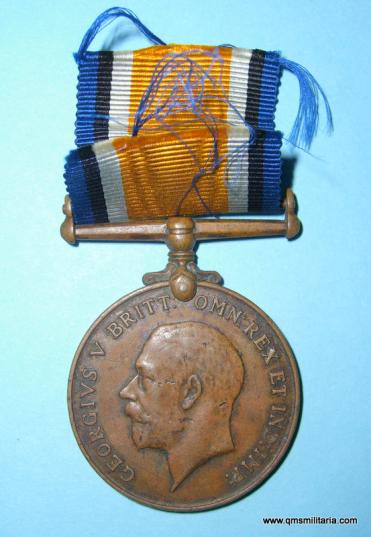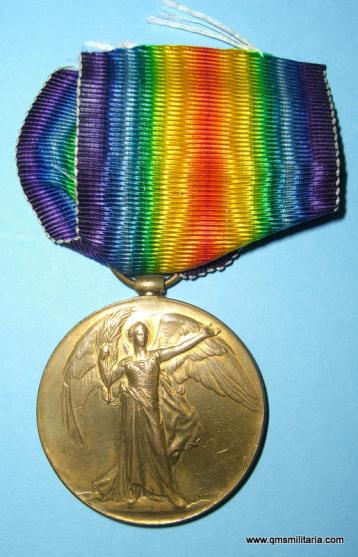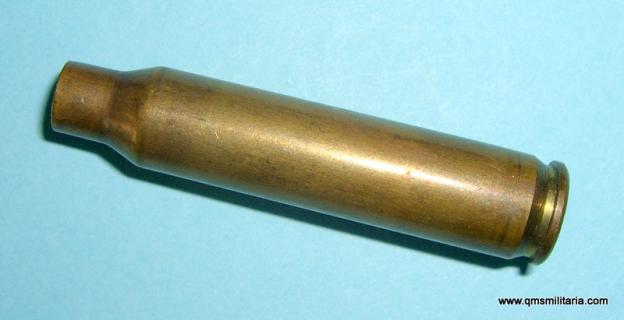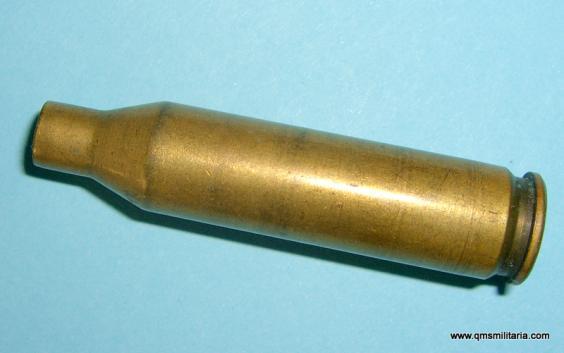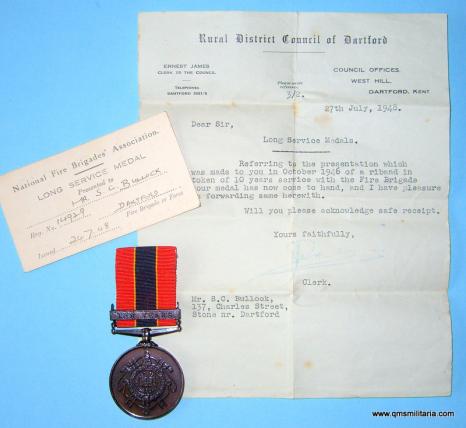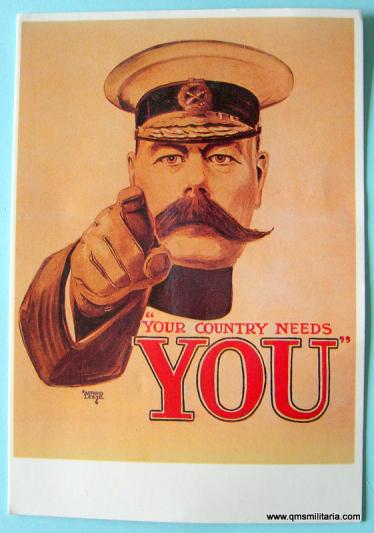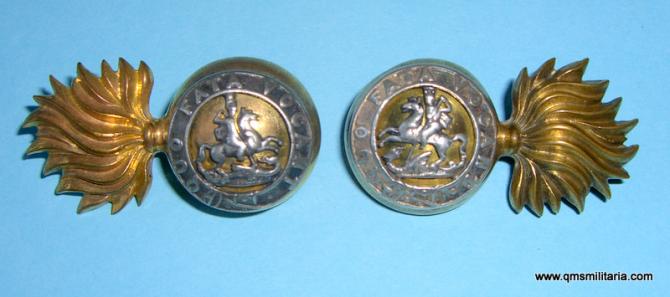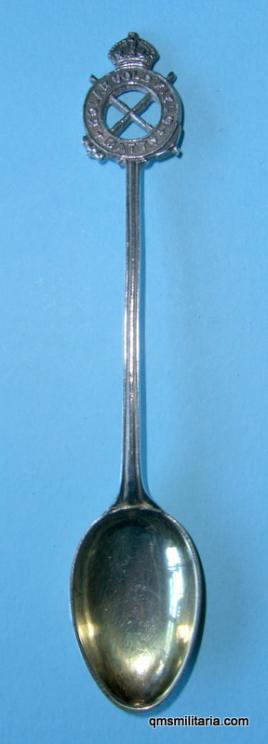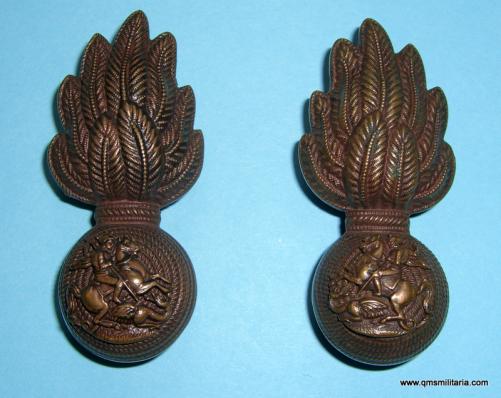WW1 British War Medal ( BWM ) Bronze issue to Chinese Labour Corps ( CLC)
Medal near VF condition with some edge nibbles. Correctly impressed "No 59602. Chinese L.C." No name just a number and unit in the case of the Chinese recipients. Short length of ribbon remaining. Scarce. read more
WW1 Victory Medal to Pte R. Buttrick Honourable Artillery Company Infantry ( HAC )
Correctly impressed to " 5136 Pte. R. Buttrick. H.A.C. - INF - "
Medal in NEF condition with short length of original watermarked ribbon. read more
Volunteer Civil Force ( Winston’s Bobbies ) White metal cap badge
A finely detailed die-stamped white metal cap badge with two original blades to the reverse. Circa 5.5cm tall and in very good condition.
The Volunteer Civil Force, also known as Winston's Bobbies formed by Winston Churchill in 1911 following the Sydney Street Siege, were an armed force.
The HQ was at Ruskin House, Rochester Row Westminster, London and it... read more
Spent Brass Cartridge Case - RORG 89 - 5.56×45mm NATO
This used round was manufactured by Royal Ordnance Radway Green (UK) 1989 manufacture SS109 type, with NATO cross marking. This round was originally developed in the USA for use in the M16 Rifle. read more
3.00 GBP
Spent Brass Cartridge Case Winchester Norma .243
In 1955 Winchester made the .243 commercially available and it is a very popular round all over the world for hunting medium sized game, probably due to its flat trajectory and very mild recoil. read more
3.00 GBP
WW2 Blitz - Dartford Kent Fire Brigade - 10 Year Long Service Medal awarded to 14929 Sidney C Bullock - with some paperwork
Dartford was the front line for the German bombardment and the Dartford area was the most heavily bombed area per acre in Britain during WW2. Planes which could not make it to London often dumped their bombs on Dartford before returning home. Flying bombs (V1 Doodlebugs and V2 rockets) fell short of London on many occasions. Over 13,000 houses were damaged by bombing and some 150 peopl... read more
Modern Postcard of WW1 iconic Your Country Needs You - Earl Kitchener
Some dents and wear but would be good for a WW1 display read more
Northumberland Fusiliers faicing pair of officers patrol jacket gilt and silver plate collar badges
Worn on the scarlet patrol jacket by officers 1896 - 1914, and by the Bandmaster in 1905 and 1906 on the collar of the scarlet tunic. Worn horizontal left and right facing. This is a facing pair (not matching but close), two part construction with two original lugs to each. Scarce. In good condition.
Col D. Wood no 229 refers. read more
Indian Army - Kolar Gold Fields (Infantry) Battalion Silver marked Spoon
An attractive and scarce Indian Army Auxiliary Forces silver tea soon. Marked Silver, and maker marked. Circa 11.3cm long.
Kolar Gold Fields are believed to be the second deepest gold mines in the world. Situated at a distance of approximately 120km from Bangalore.
The Auxiliary Force (India) (AFI) was a part-time, paid volunteer organisation within the Ind... read more
Northumberland Fusiliers ( NF ) Officer's OSD Bronze Facing and Matched Pair of Collar Badges
In very good condition with minimal wear and a facing matched pair of false bullion tall pattern collar badges, two part construction with two original lugs to each. Circa 57 mm tall. Worn 1896 - 1919.
Col. D. Wood No. 232 refers read more


